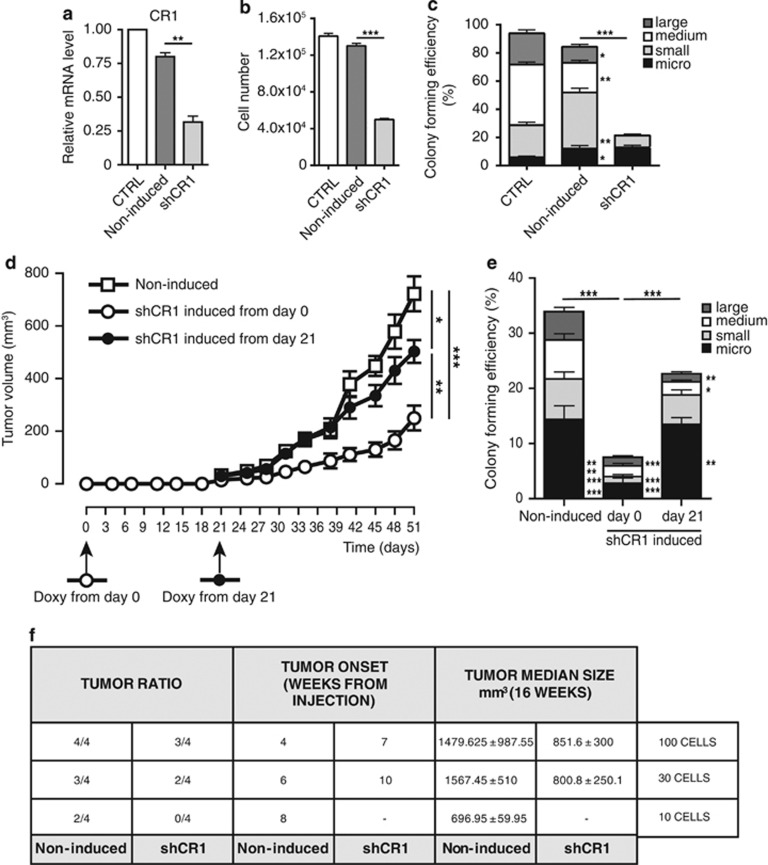Figure 6.
Cripto silencing inhibits tumor progression and decreases CSC numbers and tumor forming capacity in vivo. (a) mRNA levels, measured 48 h after infection, of spheroid line Pt1 non-transduced (CTRL) or transduced with the inducible CR1 silencing lentiviral vector TRIPZ sh4890 in the absence or in the presence of doxycycline (Non-induced and shCR1, respectively). **P<0.01. The difference between CTRL and Non-induced samples is non-significant (b) Cell numbers of Pt1 spheroid line treated as in a. ***P<0.001 (c) Size and normalized number of colonies formed in soft agar by spheroid line Pt1 treated as in a. *P<0.05; **P<0.01, ***P<0.001. Asterisks on the side of bars refer to the statistical significance of colony size sections compared between Non-induced and shCR1 samples (d) In vivo growth of tumor xenografts obtained by subcutaneous inoculation of Pt1 spheroids transduced with TRIPZ sh4890, non-induced (Non-induced) or in which CR1 silencing was induced by treating mice with doxycycline from day 0 (shCR1 induced from day 0) or at the time of tumor appearance (shCR1 induced from day 21). Results shown are the mean±S.D. of values obtained using six mice per group. *P<0.05; **P<0.01, ***P<0.001 (e) Size and normalized number of colonies formed in soft agar by xenografts cells at the end of the experiment shown in d. *P<0.05; **P<0.01, ***P<0.001. Asterisks on the side of bars refer to the statistical significance of colony size sections belonging to different samples. From left to right: Vector versus day 0, day 0 versus day 21, day 21 versus Vector. *P<0.05; **P<0.01, ***P<0.001 (f) Results of limiting dilution serial transplants performed with cells extracted from subcutaneous xenografts expressing the TRIPZ sh4890 CR1-silencing sequence without doxycycline induction (Non-induced) or induced with doxycycline at the time of injection (shCR1) shown in d. Cells were taken from dissociated xenografts at the end of the experiment, kept in the culture for one night in the presence or in the absence of doxycycline and subcutaneously inoculated at the indicated numbers (100, 30 and 10 cells) in secondary recipients (four mice for each condition). Doxycycline was added to the drinking water of secondary mice of the shCR1 group as described in Materials and Methods

